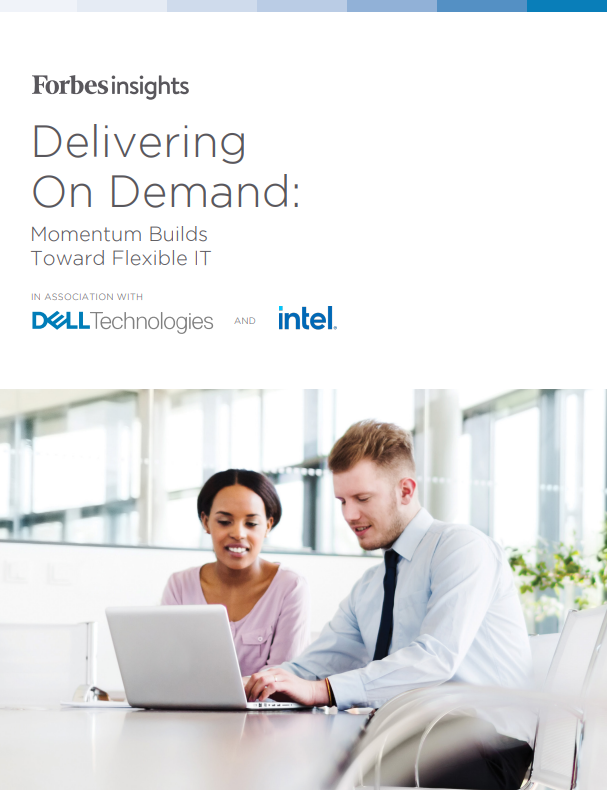5G future trends to watch in 2022
It may not revolutionise your business overnight, but success is on the horizon if you can sharpen up your 5G strategy


Don’t expect an overnight miracle from 5G. Analysts forecast that uptake and expansion will take an incremental approach that’ll see the technology gradually infiltrate itself into our day-to-day lives with each iteration and infrastructure deployment.
Experts do advise, however, that now is the time for organisations to prepare by developing their own 5G strategies. Such a programme will give your business the best chance of better understanding if, and how, to benefit from 5G as it becomes more prevalent.
The technology, indeed, has the ability to impact organisations in a number of ways, given the potential for new networking and edge computing capabilities. While some trends may materialise sooner than others, there are five key developments IT professionals should look out for in the year ahead.
5G future trends: Adoption will become more accessible
It’ll become easier for individuals and organisations to move to 5G. The GSMA’s Mobile Economy 2021 Report highlights that many mobile operators will dedicate 80% of their capital expenditure to building 5G networks between now and 2025, giving us the infrastructure needed to make the technology a viable option for businesses.
Key to 5G’s growth in 2022, however, is its everyday adoption and use by consumers. Forrester reports that the availability of 5G-capable devices is higher than any previous rollout of a communications technology standard, while the GSMA sees the cost of 5G devices dropping; the average retail price for a 5G smartphone fell below $500 (approximately £370) in the first half of 2021. This will encourage uptake as more people, and businesses, find themselves being able to afford 5G-enabled devices.
5G future trends: New capabilities will finally catalyse the next industrial revolution
Higher data speeds are the most transformative thing about 5G, says Professor Will Stewart, chair of the Institute of Engineering and Technology's (IET’s) Digital Communication Group. “It’s not just that you can deliver more bits,” he says, “it’s also cheaper as you can send more bits per minute.”
There’s much more than financial savings to be had, though – the high bandwidth and ultra-reliable low latency communication (URLLC) offered by Releases 15 and 16 enable new capabilities that the industrial sector is beginning to wake up to. By the end of this year, Release 17 will have also arrived, which will focus on additional specifications to support unmanned aerial systems (UAVs), multimedia priority services, fixed mobile convergence and network slicing.
Sign up today and you will receive a free copy of our Future Focus 2025 report - the leading guidance on AI, cybersecurity and other IT challenges as per 700+ senior executives
Indeed, 5G’s capabilities go way beyond what previous cellular technologies offered, which makes it very interesting for certain companies, says Dan Bieler, principal analyst at Forrester. “They can think about designing smarter factories,” he explains. “Use cases might include advanced track and trace, wireless connection of machines, mobile robots, sensors; with the ability to connect to so many devices you could move into a totally different dimension of data mining and analysts. 5G really offers an opportunity to have a big rethink of how manufacturing works.”
Manufacturing is at the forefront of 5G right now says Bieler, but he advises businesses in logistics and oil and gas not to underestimate the potential of 5G-enabled internet of things (IoT) possibilities. “In transport, there’s so many moving parts – containers, cars, cranes, ships, that’s where I see a lot of potential 5G implementations,” he says. “I also see it being explored in the retail space, to enable sophisticated customer engagement technologies like smart screens in stores or omnichannel customer support.”
5G future trends: Continuing to empower mixed reality services
5G will continue to support the growth of mixed reality services this year. Augmented reality (AR) and virtual reality (VR) applications have often suffered from significant lag between a request and response, which lowers immersion. With the improved latency and higher bandwidth 5G brings, the overall user experience can be dramatically improved, and we’ll begin to see more mixed reality services experienced in real-time. It’s no coincidence, after all, that debates about the metaverse have started to dominate the tech agenda.
Bieler has already seen this happening in the field service space, but there are wide variety of use cases as Susan Welsh de Grimaldo, a senior director analyst at Gartner points out. “Across enterprises, you can imagine having a remote expert who can offer guidance on something you’re working on,” she says. “There are many training use cases of AR and VR, and then there’s machine vision – remote manoeuvring of anything from a drone to heavy equipment in a mine.”
5G future trends: Paving the way for Open-RAN
RELATED RESOURCE

Delivering on demand: Momentum builds toward flexible IT
A modern digital workplace strategy
Open radio access network (open RAN) is a term that refers to industry-wide standards for RAN interfaces that support the exchange of information between vendors’ equipment. The main goal is to establish an exchangeable standard for RAN elements such as non-proprietary white box hardware and software from different vendors.
“In simple terms, this means network operators that opt for RAN elements with standard interfaces can choose more than one vendor’s hardware and software,” explains Peter Jarich, head of GSMA Intelligence. Just over three quarters (77%) of operators believe 5G will be used as trigger for open-RAN as “it will be essential to meeting enterprise coverage and services needs in the 5G era, by reducing costs and allowing greater collaboration and sharing of information between vendors,” Jarich notes.
“In terms of its wider benefit, open-RAN can encourage new vendors into the mobile ecosystem, leading to greater innovation and the subsequent adoption of new technologies such as AI and IoT.
“Separately, the increased flexibility for businesses to select equipment and software which best fits their needs will result in greater competition and the reduction in prices and cost of deploying 5G technology.”
5G future trends: Helping to foster stronger relationships
5G is set to play a crucial role in building stronger relationships in 2022, thanks to the reliability it can offer. Where businesses and individuals previously experienced network disruption, 5G provides a fast and secure service with improved bandwidth and more connection. With less stress on the network, too, data costs are lowered and an increased number of devices can be carried, Jarich points out.
“As businesses adopt 5G they’ll be able to experience reliable connections, lower latency, and wider availability,” he says. “This means business meetings can proceed uninterrupted and data, files and services can be shared seamlessly.
“Ultimately, these secure and reliable connections support the development and performance of online relationships and interactions and thus foster stronger relations.”
5G future trends: Will it materially impact business operations this year?
We can expect to see further adoption and commercialisation of 5G, but many applications will need greater technical or commercial maturity before they can come to fruition. Welsh de Grimaldo advises IT professionals to start to look at the problems their business needs to solve and think about whether 5G might be able to help, rather than the other way around.
This year is all about looking at 5G as a platform for innovation, she says. “We’re seeing quite a bit of work around 5G innovation or incubation labs, where businesses can think about how 5G’s capabilities could support them. There’s more of a mindset around co-development and co-creation and I really encourage enterprises – including the smaller ones – to look at whether there’s an opportunity to get into a 5G innovation centre or collaborate with others to figure out what they can do with this technology. What are their pain points, and how can this help?”
“Don’t make the mistake of thinking 5G is of no great relevance just because it’s not in your face right now,” adds Bieler. “It will become a general-purpose technology and have a massive impact on digitalisation going forward. If you ignore it right now, you’ll be caught out in three to five years’ time because the leading companies will have already prepared for the possibilities 5G can offer.”
Keri Allan is a freelancer with 20 years of experience writing about technology and has written for publications including the Guardian, the Sunday Times, CIO, E&T and Arabian Computer News. She specialises in areas including the cloud, IoT, AI, machine learning and digital transformation.


